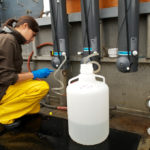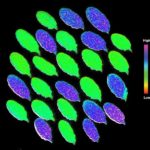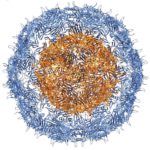 The Joint BioEnergy Institute (JBEI) welcomed the Queensland Minister for State Development, Hon. Dr. Anthony Linham on September 29. The goal of the visit was to follow up on the discussions initiated with Queensland Premier Annastacia Palaszczuk this past June. Minister Lynham’s portfolio includes responsibility for the Biofutures Strategy which Premier Palaszczuk launched in June in San Francisco. During the JBEI visit Queensland’s Biofutures 10-Year Roadmap was discussed as well as the commercialization efforts of bioenergy and biochemicals.
The Joint BioEnergy Institute (JBEI) welcomed the Queensland Minister for State Development, Hon. Dr. Anthony Linham on September 29. The goal of the visit was to follow up on the discussions initiated with Queensland Premier Annastacia Palaszczuk this past June. Minister Lynham’s portfolio includes responsibility for the Biofutures Strategy which Premier Palaszczuk launched in June in San Francisco. During the JBEI visit Queensland’s Biofutures 10-Year Roadmap was discussed as well as the commercialization efforts of bioenergy and biochemicals.
X-rays Reveal New Path In Battle Against Mosquito-borne Illness
MBIB researchers were part of a team that used SLAC’s X-ray free-electron laser (XFEL) – the Linac Coherent Light Source (LCLS), a DOE Office of Science User Facility – to get atomic views of the toxin BinAB, used as a larvicide to control mosquito-borne diseases such as malaria, West Nile virus and viral encephalitis. The structure of this bacterial toxin was solved using de novo phasing: the protein crystals were tagged with heavy metal markers, tens of thousands of diffraction patterns were collected using the XFEL, and the information was combined to obtain a three-dimensional map of the electron density of the protein. The Berkeley team, headed by Senior Scientist Nicholas Sauter, acquired and processed data for the study, published in Nature last week.
Modeling Microbial Networks in an Oxygen Minimum Zone
With help from two DOE national user facilities – JGI and the Environmental Molecular Sciences – a team at the University of British Columbia has developed a math model that could help researchers and policy makers track the impact of climate change on the microbial networks that drive the world’s marine ecosystems. The model couples omic information and biogeochemical data from the Saanich Inlet ecosystem in British Columbia, Canada, which has long been used as an analog for studying oxygen minimum zones. Read more about the impact of this work, recently published in the Proceedings of the National Academy of Sciences, here.
Let There Be (More) Light
Excess light energy that a plant can’t absorb needs to be dissipated to avoid damage and oxidative stress. Krishna Niyogi, a faculty scientist in Molecular Biophysics and Integrative Bioimaging and a UC Berkeley professor of plant and microbial biology, led the study that included researchers from Berkeley Lab, UC Berkeley, University of Pennsylvania School of Veterinary Medicine and Colorado State University at Fort Collins. The scientists are studying ways to increase the amount of light that can be safely absorbed, potentially leading to more efficient photosynthesis and higher crop productivity. Read the Berkeley Lab Science Short.
Scientists Find New Way to Manipulate Size of Virus-Like Particles
In their Nano Letters paper released August 23, 2016, a research team led by Danielle Tullman-Ercek, biologist faculty scientist in Molecular Biophysics and Integrated Bioimaging, described a new size selection method for virus-like particle assembly using chromatography. Their work has important implications for virus evolution theory, multi-protein assembly behavior, and protein-based nanomaterial development.
- « Previous Page
- 1
- …
- 174
- 175
- 176
- 177
- 178
- …
- 213
- Next Page »
Was this page useful?







